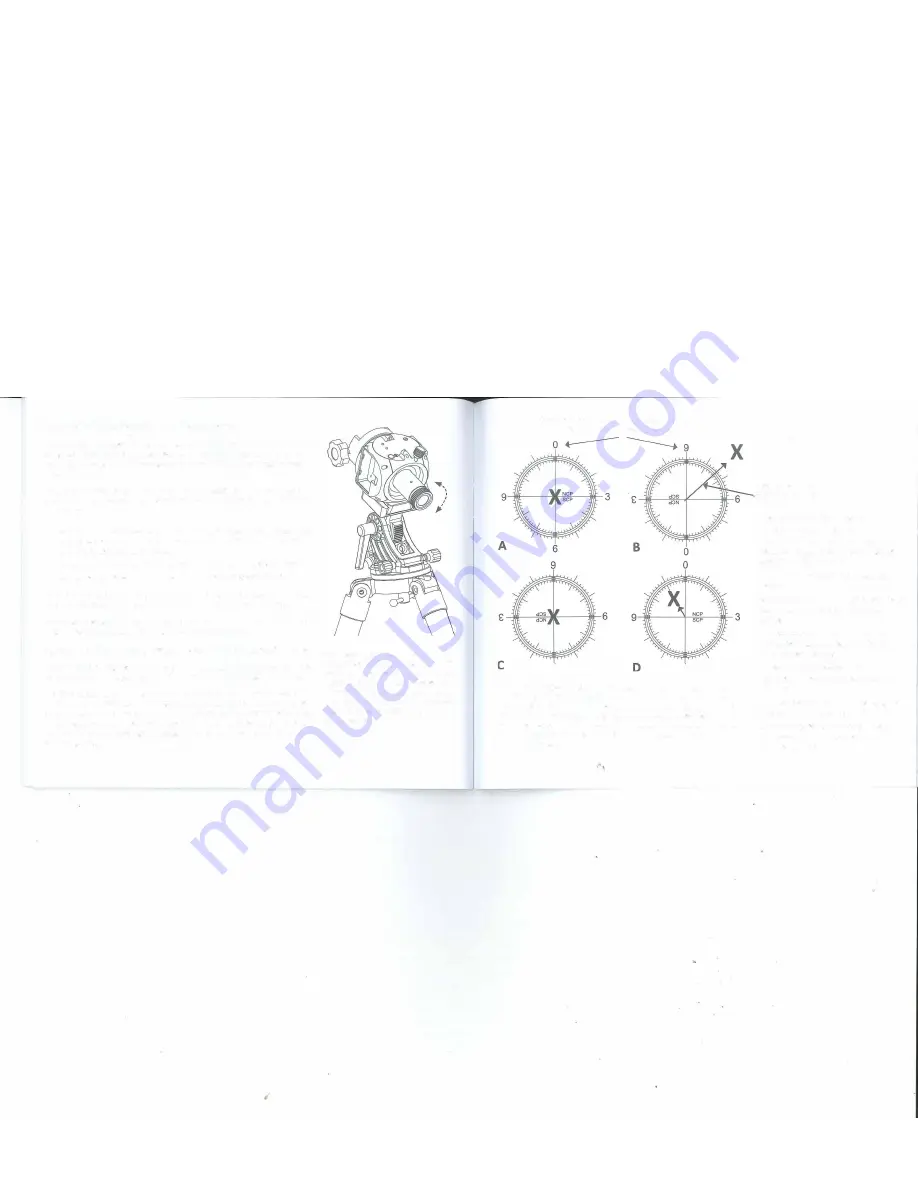
Appendix II: Calibrating the Polar Scope
For the highest precision it may be necessary to align the reticule in your
Po/or
Scope
before performing a polar alignment. This simple calibration procedure
will ensure that your polar alignments are done to the highest possible level of
precision.
First, check to see that your
Polar Scope
requires calibration. It may be just fine
right out of the box, so
.
do this simple test before attempting the calibration
procedure:
With your
Polar Scope
mounted in SAM aim it at a distant object (prefereably
at least 100 metres away) that will not change its location. A street light or
distant chimney is a good choice.
Align the distant target with the central cross hair in the
Polar Scope
reticule.
Rotate the
Polar Scope
180 degrees while keeping everything else still.
If the distant target is still under the central cross hair, or if it has barely moved
from that point, then YOU DO NOT NEED TO CALIBRATE your polar scope.
If the distant target has "moved away" from the cross hair significantly, then you
should align the reticule to the optical axis of your
Polar Scope.
Aligning The Polar Scope Reticule to the Polar Scope Optical Axis
If a calibration is required you will need a 1.5 mm Allen wrench to perform the
following steps. Check your local hardware store if you don't have one on hand.
The
Polar Scope
reticule is held in place by the three Allen screws around the
perimeter of the eyepiece. Consequently, you should not completely loosen any
of these screws as the reticule will lose its support and no longer be adjustable.
If this happens you will need to unscrew the eyepiece from the polar scope,
manually centre the glass reticule as best you can, then reinsert the screw that
had lost contact.
36
Aim your polar scope at a distant
target then rotate the Polar Scope 180
degrees so that the lock knob is on the
opposite side. Next, check the position
of your distant target in the eyepiece.
If it has moved off centre significantly
you will need to calibrate your polar
scope reticule.
Note how the orientation of the reticule changes when
Polar Scope is rotated 180 degrees.
0
6
These figures represent the view through the polar scope when a target
is initially centered (A), after Polar Scope has been rotated 180 degrees
(B), after the reticule adjustment has been made and SAM has been re
centered on the target (C), and the target displacement after the second
180 degree rotation. There is a bit of displacement left as shown here,
but one more iteration of the reticule alignment is likely all that would be
needed to remove it.
Adjust reticule until
target appears here
Explanation of the Figures
A: Following tripod and/or wedge
adjustments SAM has been aimed so that
the distant target (X) falls under the central
cross of the reticule pattern.
ACTION: Now Rotate the Polar Scope 180
degrees.
B: After rotation the target appears displaced
due to misalignment of the polar scope
reticule.
ACTION: Adjust the reticule using the three
Allen screws (see page 38) until 1/2 of the
error has been corrected.
'
C: Using the tripod and/or wedge
adjustments re-centre the target under the
cross hair.
ACTION: Rotate the Polar Scope 180 degrees
(back to the original starting position).
D: Note any deviation of the target. If any
significant deviation remains repeat the
steps starting at A.
37



















